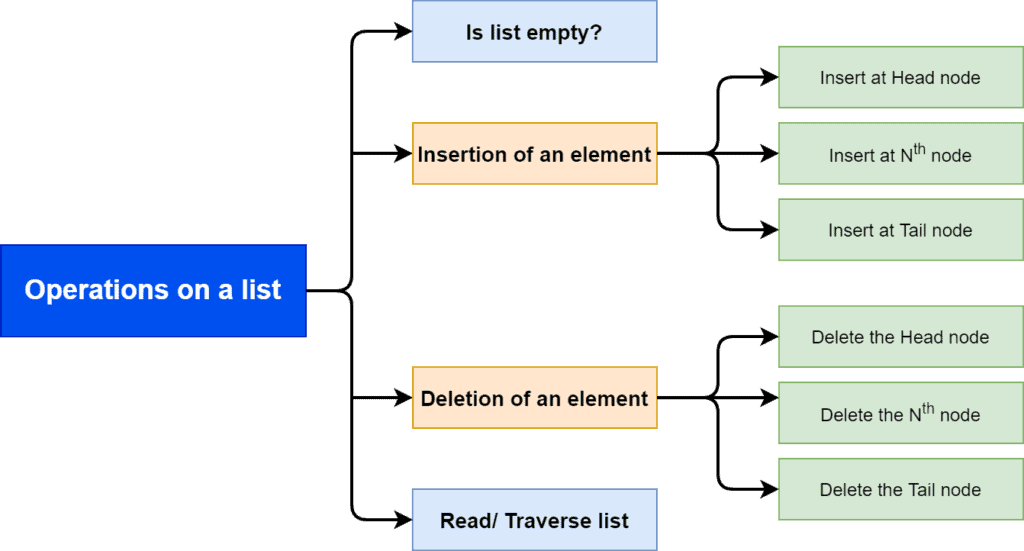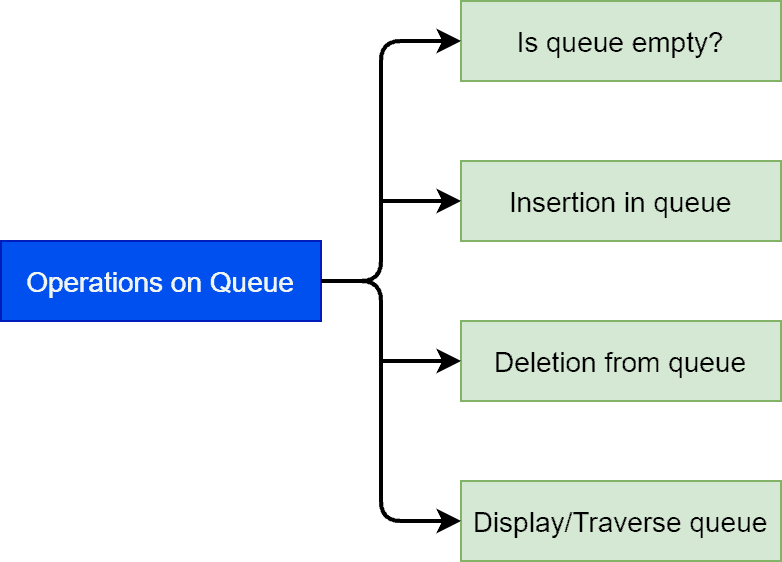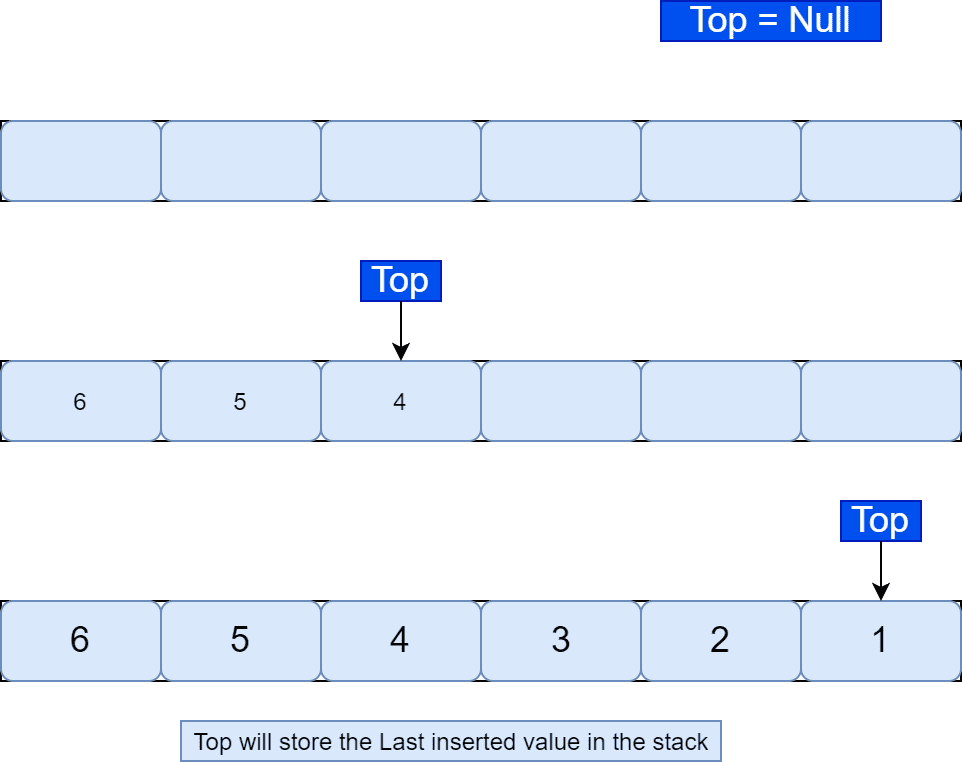1. 概述
在本篇文章中,我们将讨论三种常见的抽象数据类型(ADT):列表(List)、队列(Queue)、栈(Stack)。我们将分别介绍它们的变体、基本操作以及使用数据结构实现的策略。
2. ADT 简介
数据类型用于定义变量可以存储的数据种类以及支持的操作。例如整型数据支持加减乘除等操作。
抽象数据类型(Abstract Data Type,ADT) 是一种数据类型的抽象模型。它定义了数据结构的逻辑行为和操作,但隐藏了具体的实现细节。使用 ADT 时,用户只需要知道“要做什么”,而无需关心“怎么做”。
在不同编程语言中,ADT 的实现方式不同。例如:
- C 语言中常用结构体(struct)实现
- Java 或 C++ 中则使用类(class)实现
尽管实现方式不同,ADT 所支持的操作是统一的。
ADT 的三大常见类型:

3. 列表(List)
列表是一种有序的数据集合,元素类型一致,数量有限。列表的“有序”是指元素有索引位置,而不是排序顺序。
3.1. 列表的类型
列表主要有三种类型:

- 有序列表(Ordered List):元素按某种顺序排列,如数字或字母顺序
- 无序列表(Unordered List):元素顺序由用户决定
- 索引列表(Indexed List):通过索引访问元素
3.2. 列表的基本操作
列表支持以下基本操作:

isListEmpty():判断是否为空insertElement(N):在指定位置插入元素deleteElement(N):删除指定位置的元素traverseList():遍历整个列表
3.3. 列表的实现方式
使用数组实现
数组实现简单,但存在固定大小的问题。当数组满时,必须重新分配更大的空间并复制元素,效率较低。
✅优点:访问元素快(O(1))
❌缺点:插入/删除慢(O(N)),内存浪费或溢出风险
使用链表实现
链表是一种更灵活的实现方式。每个节点包含数据和指向下一个节点的指针。
✅优点:动态扩容,插入/删除效率高
❌缺点:访问元素慢(O(N))

4. 队列(Queue)
队列是一种线性 ADT,遵循 FIFO(先进先出)原则。插入操作在队尾(rear),删除操作在队头(front)。
4.1. 队列的类型
队列主要分为四类:

- 普通队列(Simple Queue):严格 FIFO
- 循环队列(Circular Queue):首尾相连,提高内存利用率
- 优先队列(Priority Queue):根据优先级出队
- 双端队列(Deque):两端均可插入/删除
4.2. 队列的基本操作
队列支持以下操作:

isQueueEmpty():判断是否为空enqueue(value):入队dequeue():出队traverseQueue():遍历队列
4.3. 队列的实现方式
使用数组实现
数组实现简单,但需要维护 front 和 rear 指针。插入/删除时需移动元素,效率较低。
✅优点:实现简单
❌缺点:固定大小,插入/删除开销大
使用链表实现
链表实现更灵活,使用 front 和 rear 指针分别指向队列首尾。
✅优点:动态扩容,插入/删除高效(O(1))
❌缺点:查找效率低(O(N))

5. 栈(Stack)
栈是一种线性 ADT,遵循 LIFO(后进先出)原则。所有插入和删除操作都在栈顶进行。
5.1. 栈的类型
栈主要分为两种类型:

- 寄存器栈(Register Stack):位于 CPU,容量小
- 内存栈(Memory Stack):容量大,深度可变
5.2. 栈的基本操作
栈支持以下操作:

isStackEmpty():判断是否为空push(value):压栈pop():出栈traverseStack():遍历栈
5.3. 栈的实现方式
使用数组实现
使用数组实现时,需要定义一个 top 变量来记录栈顶位置。初始时 top = -1。
✅优点:访问/插入/删除快(O(1))
❌缺点:固定大小,扩容麻烦

使用链表实现
链表实现栈更灵活,每个节点包含数据和下一个节点指针,top 指针指向栈顶。
✅优点:动态扩容,操作高效
❌缺点:查找慢(O(N))

6. 总结
本文我们介绍了三种常见的抽象数据类型(ADT):
- 列表(List):有序集合,支持随机访问
- 队列(Queue):FIFO,适用于任务调度
- 栈(Stack):LIFO,常用于函数调用、表达式求值
我们分别讨论了它们的类型、操作和实现方式,并对比了数组和链表实现的优缺点。
在实际开发中,选择合适的数据结构非常重要。例如:
- 如果需要频繁插入/删除,使用链表实现的列表或队列更合适
- 如果频繁访问元素,数组实现的列表更高效
- 如果需要实现函数调用栈,栈结构是最佳选择
掌握这些 ADT 的特性,有助于我们写出更高效、更健壮的程序 ✅